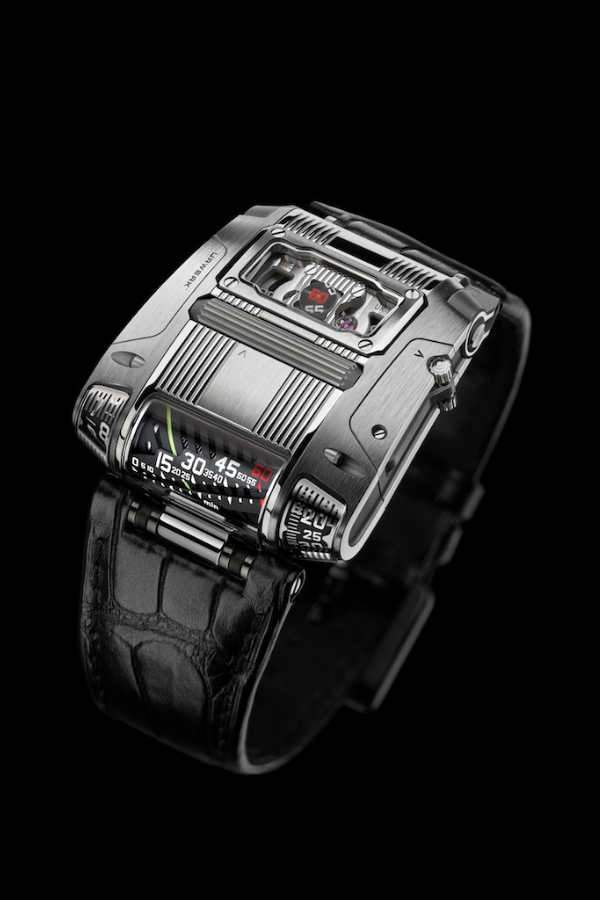
The inspiration
Martin Frei, one of the founders of Urwerk, notes that it is a desire for authenticity that leads to the brand’s unconventional creations. “We want to be personally engaged and to be able to stand behind our creations. Most watches look alike and so the question is how do we put our own individual stamps on our watches.”
With the new UC-111C, Urwerk has pushed it another step further with a watch that tells time linearly and digitally via a cylindrical minute track.
Powered by an automatic calibre with a frequency of 4Hz and a power reserve of 48 hours, its genesis happened a long time ago when Frei became intrigued by the speedometer of an old Volvo car belonging to the brother of his partner, Urwerk’s co-founder and master watchmaker Felix Baumgartner. “I made the first drawing in 1995,” reveals Frei. “Back then a linear indication like this did not appear on a wristwatch but it had been used on table clocks.”
Finding no viable solution to realise it technically back then, the design was put on the backburner - but it was never forgotten. As chief designer, Frei is always preoccupied with finding an answer to a problem. “We don’t ask why, only how. What I enjoy most about my job is realising our ideas,” he says.
Also see: The spectacular MB&F’s HM9 ‘Flow’



